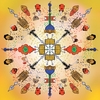Religie in BMGN: heilig en profaan
DOI:
https://doi.org/10.51769/bmgn-lchr.9891Abstract
BMGN heeft inzake onderzoek en disseminatie van het thema religie een rol van betekenis gespeeld. Die rol nam BMGN veeleer impliciet op, zelden expliciet. Religie stond niet centraal in de redactionele missie, maar was inhoudelijk wel degelijk aanwezig en bij momenten ook heel zichtbaar. Het tijdschrift verbond niet alleen historici, het verbond ook onderzoek van historici en van andere menswetenschappers uit Nederland en Vlaanderen rond het thema religie en stimuleerde op velerlei wijzen de verspreiding van methodologische vernieuwingen en innovatieve inzichten. Jammer genoeg heeft BMGN religie of religiegeschiedenis nooit expliciet geproblematiseerd. Naast een meer klassieke benadering van religie (de werking van de geïnstitutionaliseerde religies of kerken) lag de focus op de rol van religie in het politieke en sociaal-maatschappelijke leven, maar ook in culturele evoluties (identiteitsopbouw of identiteitsconstructies). BMGN dreef veeleer mee met de ontwikkelingen in de religiegeschiedenis, het was geen trendsetter. In deze vaststelling schuilt een uitdaging voor de volgende tien jaar. Bij een feestnummer hoort een wens: religie mag en kan, als inherent onderdeel van de cultuurgeschiedenis, een explicieter onderdeel worden van BMGN.
The BMGN has been of great significance in researching and disseminating religion as a theme. The journal tended to assume this role implicitly but rarely did so explicitly. Religion was not pivotal in the editorial mission but indeed present in substance and at times very visible as well. In addition to connecting historians, the journal brought together research by historians, and by extension other scholars of the humanities, from the Netherlands and Flanders in relation to the theme of religion, and encouraged dissemination of methodological innovations and innovative insights in many ways. Unfortunately, the BMGN has never explicitly addressed religion or the history of religion. Aside from a more conventional approach to religion (the effect of institutionalised religions or churches), the main focus was the role of religion in politics and society, as well as in cultural transitions (identity constructions). The BMGN tended to go along with developments in the history of religion and was not a trend setter. This observation embodies a challenge for the decade that lies ahead. A festive issue includes a wish: religion is permissible and acceptable, as an inherent part of cultural history, as a more explicit part of the BMGN.
Downloads

Downloads
Additional Files
Published
Issue
Section
License
Copyright (c) 2021 Jan De Maeyer

This work is licensed under a Creative Commons Attribution 4.0 International License.
Authors who publish with this journal agree to the following terms:
a) Authors retain copyright and grant the journal right of first publication with the work simultaneously licensed under a Creative Commons Attribution 4.0 International (CC BY 4.0) that allows others to share the work with an acknowledgement of the work's authorship and initial publication in this journal.
b) Authors are able to enter into separate, additional contractual arrangements for the non-exclusive distribution of the journal's published version of the work (e.g., post it to an institutional repository or publish it in a book), with an acknowledgement of its initial publication in this journal.
c) Authors are permitted to post their work online (e.g., in institutional repositories or on their website) prior to and during the submission process.
Authors are explicitly encouraged to deposit their published article in their institutional repository.







